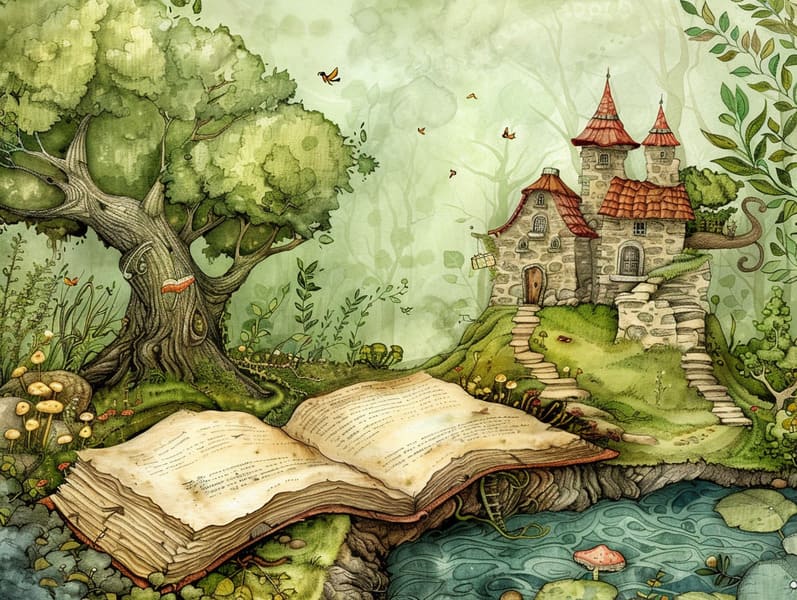The Inception of Children's Fairy Tales with Their Eternal Fascination.
The Inception of Children's Fairy Tales with Their Eternal Fascination.
Blog Article

Children's fairy tales have historical significance. These narratives have been shared from one generation to the next well before they were ever written down. They emerged from a variety of societies, including Middle Eastern traditions. They were initially passed along among mature audiences, often carrying themes and messages concerning the societal norms and beliefs of the time.
The renowned Brothers Grimm, Jacob and Wilhelm, were among the first to compile and release many of these beloved narratives. Their anthology, "Grimm's Fables," included stories like "Cinderella," "Hansel and Gretel," and "Snow White," which have since become hallmarks in the world of classic fairy tales. Similarly, H. C. Andersen's enchanting stories, such as "The Sea Maid," and "The Story of the Ugly Duckling," have won hearts worldwide, solidifying their place in the pantheon of famous fairy tales.
Despite their ancient origins, classic fairy tales remain as important as ever, especially as kids' bedtime tales. These charming stories are now available in various formats, including colorful picture books, enchanting animations, and online storybooks.
Their continued relevance can be linked to several fascinating points:
Important Morals: Old fairy tales often provide important moral lessons. Fairy tales like "The Tale of the Boy Who Cried Wolf" teach the value of integrity, while "The Tortoise and the Hare" highlight the virtues of determination and meekness. These tales offer kids clear distinctions between virtue and vice, forming their moral compass in a subtle yet meaningful way.
Warmth and Understanding: Old fairy tales frequently present heroines facing difficulties and adversities, inspiring children to understand with their struggles and encourage their triumphs. For instance, "Beauty and the Beast" points out the benefit of seeing beyond the surface to comprehend the real person of a soul, cultivating sympathy and insight.
Cultural Awareness: Many fairy tales are infused with the cultural contexts from which they originated. Engaging with these stories can provide captivating looks into different backgrounds, building a sense of international awareness and respect.
Imagination and Innovation: The fanciful elements in traditional fairy tales—enchanted objects—enliven children’s fantasy worlds. These narratives transport readers to mythical realms, firing up fantasy-filled thoughts and a sense of amazement that continues a lifetime.
Classic fairy tales are not only entrancing but also pedagogical. They provide charming tools in building various mind and heart abilities in kids. When traditional fairy tales are read aloud, they foster get more info language proficiency by presenting new words and complicated sentence structures. This practice also fosters hearing abilities and mental focus, as the young hang on every word, eager to see what happens next.
Furthermore, discussing the themes and characters of classic fairy tales can cultivate critical thinking and critical thinking. Young ones are taught to pinpoint patterns, make predictions, and get cause and effect. These analyses also encourage the young communicate their thoughts and feelings, strengthening their emotional intelligence.
In today’s digital era, the prevalence of digital storybooks has made these tales more attainable than ever. Internet sites and web apps give huge assortments of ancient fairy tales that can be accessed or listened to anytime, anywhere. Fairy tales spoken are particularly prevalent, featuring an interactive method for children to experience these charming tales. Sound books and narrated videos move characters and settings to life, often enhanced by whimsical soundtracks and melodies that amplify the narrative journey.
The unfading fascination of classic fairy tales lies in their ability to alter to today's society while keeping their essential themes. Contemporary updates of these stories often showcase more different characters and modern settings, making them meaningful to today’s audience. However, the key lessons of bravery, empathy, and justness remain unchanged, continuing to move children of all ages.
Ancient fairy tales also offer a sense of solace and homeliness. They provide a organized narrative with a evident beginning, middle, and end, often concluding with the closure of conflicts and the triumph of goodness over badness. This steadiness can be solacing for children, imparting a sense of solidity in an ever-changing world.
Old fairy tales continue to bewitch and coach new generations, maintaining their spell and significance in modern society. As nighttime stories for kids, they bring a perfect blend of charm and enlightenment, sustaining moral values, empathy, and creativity. The abundance of online fairy tales and the favor of fairy tales spoken guarantee that these ancient tales remain reachable to new generations.
By holding onto and conveying these fairy tales, we continue to glorify the rich tapestry of inventiveness and cultural heritage. Whether you are viewing a vibrantly illustrated book, perusing a digital library, or playing an read-aloud book, the elegance of classic fairy tales is always within reach. These tales demonstrate of the ageless essence of storytelling and its ability to draw us together across centuries and lands.
If you are viewing a vividly illustrated book, seeing a electronic library, or listening on an sound book, the mystique of Grimm's fairy tales is always within reach.
These stories remind us of the unwavering power of storytelling and its ability to draw us together across centuries and lands, forging a link that fascinates and enlightens alike.